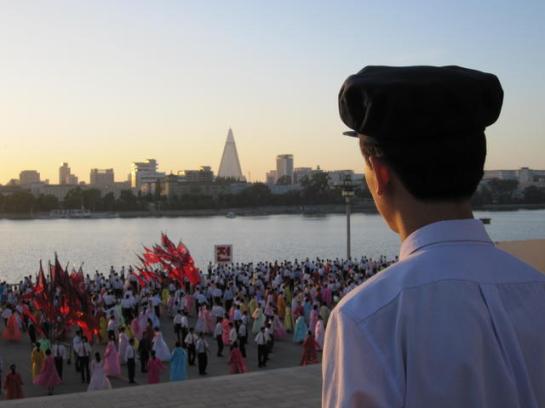
Sep '11 - Nov '11
I've just started on the Cooper Union MArch II course, and am excited to be here in New York to say the least! I'll be sharing my project work for studio, sculpture, and elsewhere over the upcoming year.
For this first post I thought I'd share something I wrote for a course appropriately titled 'Blogging Architecture'. It's taught by Professor Lebbeus Woods, who I hope doesn't need an introduction!
So, to deal with the 'medium' of the blog, I've started a Wordpress site called exilliteratur, 'a platform for projects about incomplete, inaccessible, or fragmented acts of architecture – places that we cannot visit but can discover in our imagination.'
exilliteratur (German for ‘Exile Literature’) encompassed the work of writers such as Theodor Adorno and Bertoldt Brecht who had to leave Germany because of their ideological and political beliefs. This divide led to simultaneous critique and nostalgia for their homelands, which they had to write about from a nomad’s perspective, and is similar to the incomplete nature of how we communicate about architecture and space.
Our first task was to write a post that was related to the 10th anniversary of 9/11. Since I'm a relative newcomer to New York, my thoughts turned first to the other side of the world...
--
Exile and the Tower

Towers have an archetypal force rooted in the expression of militarized political power. Their use as centers of repression and surveillance has a long history – watchtowers, the castle keep, the hilltop fortress. They are often the prison for innocents – Rapunzel, the Princes in the Tower of London, and the inhabitants of the World Trade Center’s Twin Towers.
The flattening of the world by centuries of globalization and communication has changed the experience of architecture into a largely remote activity, and has changed the form of architecture itself. However, as physical artefacts of mythic proportions, towers have retained their expressive essence. Although buildings now embody relatively transparent intentions, they often harbour politicized intentions that are best revealed though extreme circumstances.
On the 10th anniversary of 9/11, is it possible to reflect on the inevitable counterpart of ideology – unattainable ambitions that result in incomplete, inaccessible, or destroyed acts of architecture. Is it possible that the Tower has changed from being the site of exile, to being an exiled object itself?
–
The fall of the Twin Towers immortalized them as cultural and political icons, existing from that moment on as symbols of the pre-terrorist, Arcadian Age of (Economic) Freedom, and as a post-terrorism rationale for the War on Terror. Their destruction provided the Republican Government with irrefutable justification for their wars, and gave White House speechwriters the three essential elements of Aristotle’s rhetoric: logos / argument: a plea for striking back against the enemy; pathos / feeling: never forget the fallen; ethos / beliefs: let us fight for freedom.
With the visible contrast between high-rise and ground zero in the case of the World Trade Center, the poetics of the narrative served as the perfect basis for America’s military-industrial complex to self-mythologize again. In this case, the Twin Towers were exiled to memory as we are prevented from ever entering their interior again.
–
On the same day, across the globe in North Korea, the Ryugyong hotel has been exiled from occupants for seven years. It is the victim not of terrorism, but of a diametrically opposed worldview – one based on suppression, the cult of the dictator, and urban propaganda.
At the centre of Pyongyang, this 105-floor hotel has been in a state of perpetual construction since 1987. Its categorization as a hotel is questionable, as it has never had any rooms, let alone occupants. The project was intended to be a showpiece project for foreign journalists to marvel at the economic miracle of North Korea. The work was halted for a decade after the fall of the Soviet Union and the lack of economic support from the country’s largest supporter. The intention of the designers was for the hotel to stand as the largest structure in the world, an ambitious endeavor for a nation that revels in the cult culture of Kim Jong-Il despite widespread energy and agricultural crises.
Official data surrounding its properties have been shrouded in bureaucratic mist. A United Nations task force has deemed Ryugyong Hotel’s structure unfit for human habitation, with an international group of engineers declaring that the elevator cores do not run vertically upwards.
–
In 2011, somehow, both sites in Pyongyang and New York City have become the stuff of speculators’ dreams: the WTC site now a Silverstein properties exclusive deal, and the Ryugyong has been clad as part of an ‘aid package’ by an Egyptian telecommunications company eager to implement a 3G mobile phone network in the country. The deal is that in exchange for capital investment in North Korea’s infrastructure, the Egyptian company will undertake the cladding of the concrete shell, adding a layer of purely reflective glass to give it an air of dignity, appropriately enough like dressing a corpse for the afterlife.
Although both these buildings started from opposite sides of the world upon different principles, both have become exiled from the sphere of functional architecture to attain virtual immortality. If all goes well, Ryugyong will hopefully become a hermetically sealed pyramid – a perfect example of concrete Communism – pure façade and zero transparency.

/////
No Comments
Block this user
Are you sure you want to block this user and hide all related comments throughout the site?
Archinect
This is your first comment on Archinect. Your comment will be visible once approved.